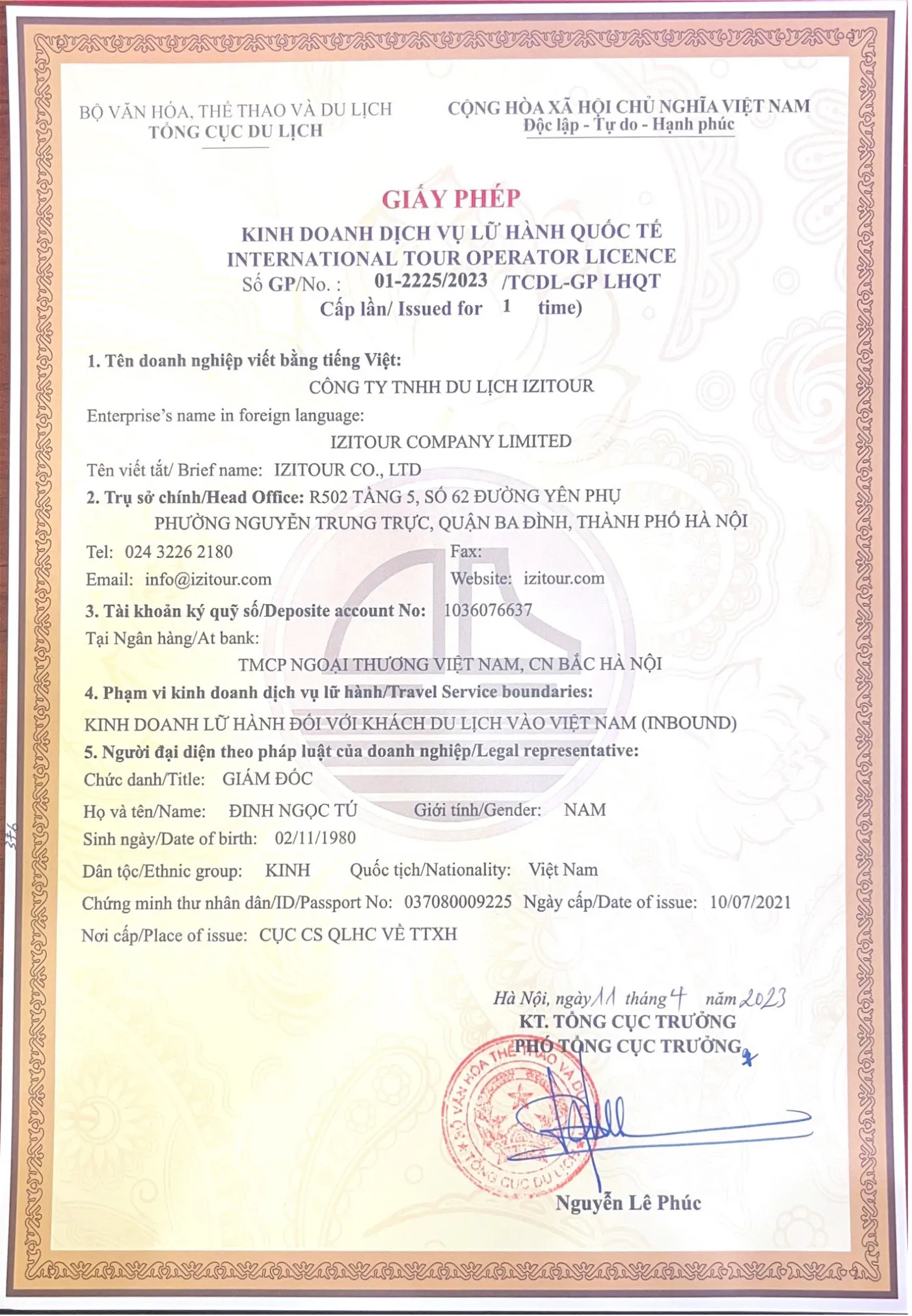In addition to beautiful rice terraces, friendly local people, and unique customs, Sapa food is also worth trying for plentiful traditional dishes you've never heard of.
I am a food explorer wherever I go. Are you the same? And for the Northern part of Vietnam, Sapa, I was impressed by how many nice food dishes they offer. Not luxury, but definitely authentic, yummy and flavorful. Let's break down the top list for Sapa local food.
- 1. Thang Co (Horse meat soup) - authentic Sapa local food
- 2. Free range pork (carried-under-arm pig) - Sapa traditional food
- 3. Salmon/Sturgeon hotpot - What to eat in Sapa on cold days
- 4. 5-colored sticky rice
- 5. Dried buffalo meat - Sapa local dish
- 6. Men Men
- 7. Black chicken
- 8. Con sui (dry Pho)
- 9. Sapa chestnut cake
- 10. Sapa fruit
1. Thang Co (Horse meat soup) - authentic Sapa local food
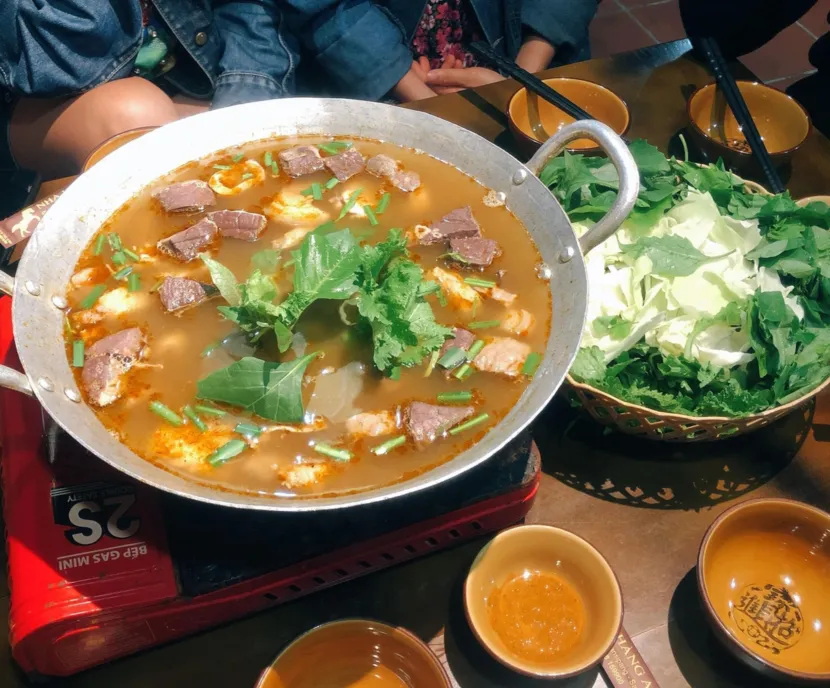
Thang Co is a very popular food in Sapa and Ha Giang as well
The Mong ethnic minority's traditional dish, Thang Co (horse meat soup), is well-known in Vietnam's mountainous northwest, particularly in Sapa. It is made from a mixture of diced-up flesh, bones, and offal from various animals, most commonly from horses but also from cows, pigs, and buffaloes. Other ingredients in this Sapa traditional food include spicy fruits like cardamom and star anise as well as vegetables like cabbage, lemongrass, chayote, and chili leaves. Once the animal is dead, its internal organs are removed. These pieces are later chopped up and cooked in a pan with their own grease. After that, they add water to the pan and simmer the meat for a while for a soft texture.
Because it is the H’Mong people's specialty, this typical Vietnamese hill tribe dish can be found wherever they live, and yes, there are H’Mong people in Sapa. Locals claim that the H'Mong historically only traveled on foot or by horseback. Due to the abundance of horsemeat, the Thang Co became to be seen as one of the traditional foods to try in Sapa. If the horses lose their ability to work due to illness or old age after being used as a mode of transportation, they would then be used as the main component in the Thang Co dish. The flavor is initially very strong but is soon subdued by a variety of spices. The sauce used in this dish, which is made with several different spices and a slightly bitter zing, is what gives this Sapa local food its distinctive flavor. On chilly days, Thang Co is incredibly popular in the Sapa region.
2. Free range pork (carried-under-arm pig) - Sapa traditional food
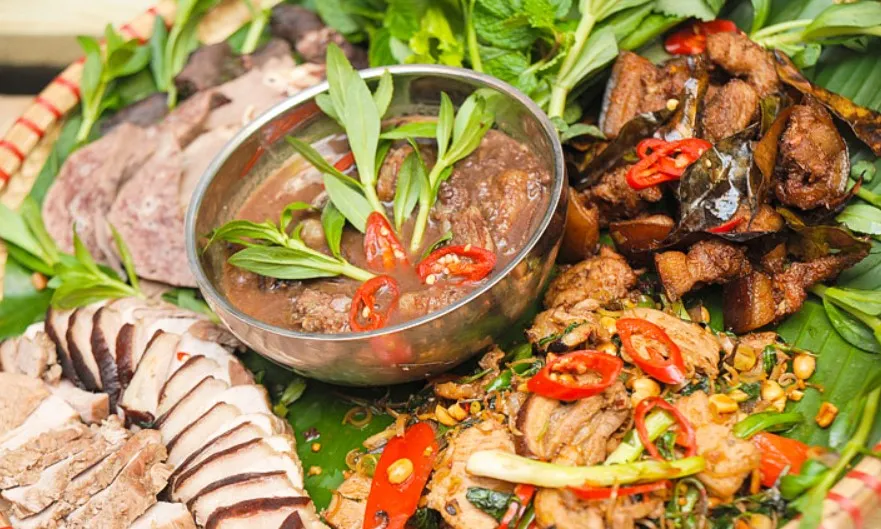
Lon Cap Nach is a feature of Sapa cuisine
If you have already come to Sapa, you might see this: the villagers carry free range pig or Cap Nach Pig (Pig held by armpits) under their arms to the market! How funny is that! Since they are raised naturally, these pigs must forage for food on their own in gardens or forests. Therefore, compared to other types of pigs, a Cap Nach pig is typically leaner, less fat, and more fragrant. Cap Nach pork, one of the best local foods in Sapa, is very firm, fragrant, and different from those of industrially raised pigs because it is free-range and self-fed from infancy.
This Sapa traditional food can be prepared in a variety of ways, including steamed, grilled, stir-fried, fried, etc., but the best method is to cook it over charcoal. The pigs will be grilled or roasted whole after being cleaned and marinated. Additionally, the traditional dipping sauce for Cap Nach pork must contain distinctive spices like Mac Mat leaves, Doi, or Xen seeds and be combined with salt and green chili. It is definitely a traditional food to try in Sapa if you are looking for authentic flavors and wondering what to eat in Sapa.
3. Salmon/Sturgeon hotpot - What to eat in Sapa on cold days
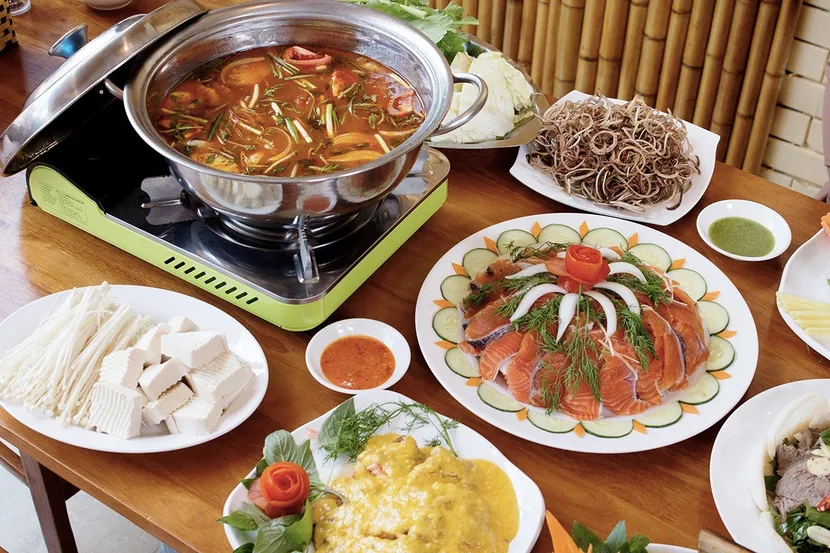
The best food in Sapa cannot exclude salmon/sturgeon hotpot
Sturgeon and fresh salmon are two other well-known specialties in Sapa. Thanks to the region's temperate climate, salmon and sturgeon can be successfully raised and grown here. Their meat is tough, greasy, and nutrient-rich, making them must-try dishes for any Sapa food lover. Two of the most well-liked and delectable salmon dishes are sashimi salad and grilled salmon. The firm yet tender, sweet-tasty, and greasy texture of the salmon is still present in these preparations. Additionally, a salmon hotpot with delectable broth is a highlight for diners seeking authentic Sapa local food experiences.
Similar to salmon, there are numerous ways to prepare sturgeon. Eating sturgeon bones is the most unique experience because they are crispy like cartilage, very tasty, and quite interesting, especially when made into a hot pot. On chilly days, there is nothing more delightful than enjoying a bubbling, fragrant sturgeon hotpot, served with fresh vegetables, and the broth is made from fish bones. You will be given a type of vermicelli made from the ground tubers of locals instead of instant noodles when they order hot pot. This particular variety of vermicelli is about the size of a little finger, and it frequently needs to soak in the broth for longer than 10 minutes before it can be consumed. In exchange, you will enjoy the dish's chewy texture from the noodles combined with the sweet and sour taste of hot pot broth. This dish is truly a traditional food to try in Sapa and a perfect answer to what to eat in Sapa during the cold season.
4. 5-colored sticky rice
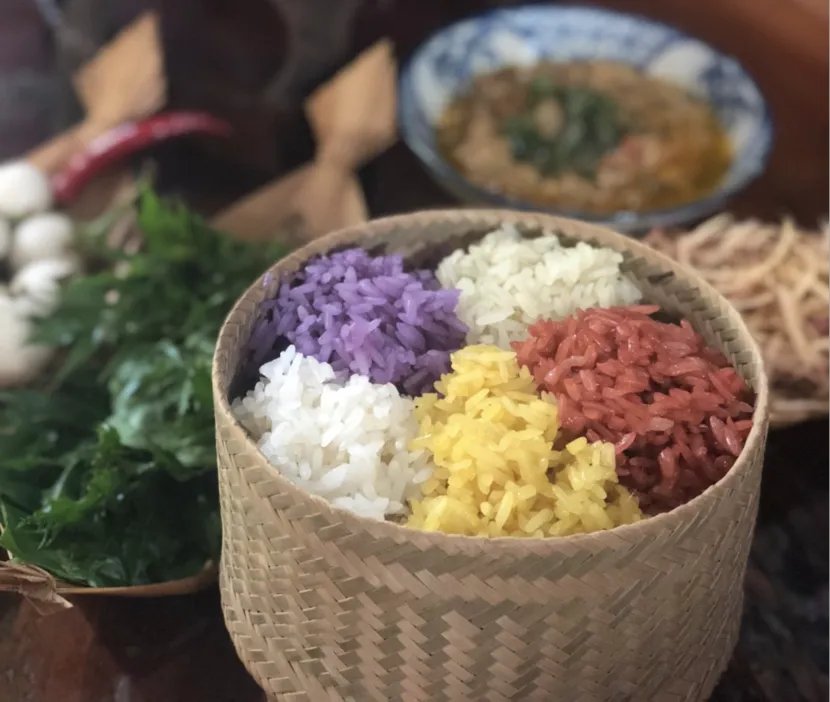
Try some naturally-coloured sticky rice grown on the mountainous terraces
The Tay ethnic group in the Vietnamese Sapa region is known for its five-color sticky rice, or Xoi ngu sac, a vibrant and symbolic Sapa traditional food. The dish consists of five different kinds of sticky rice, each with a unique color: red for fire, green for wood, yellow for earth, black for water, and white for metal. There may be additional hues in these five varieties of rice, but red, yellow, and green are required.
Making this Sapa local food requires a lot of preparation but the final result is superb! Glutinous rice needs to be soaked in water until it blooms for 6 to 8 hours before cooking the dish. After that, it is divided and colored using natural fruit and vegetable dyes from the nearby forests. In particular, the baby jackfruit or red leaves are used to create the red color, the ginger leaves or grapefruit peel are used to make the green color, the ash mixed with lime water is used to create the black color, the turmeric is used to create the yellow color, and the elderberries used to create the purple color. The white pile of rice is typically on top when it is steamed and served, while the colors that will fade the fastest are placed at the bottom of the serving plate (or a banana leaf).
According to Tay culture, a family's future prosperity is correlated with how colorful its rice is. For New Year's or other festive occasions, five-color sticky rice is a must-have. Therefore, if you come to Sapa at New Year time, don’t forget to taste this sticky rice - one of the most delicious traditional food to try in Sapa.
5. Dried buffalo meat - Sapa local dish
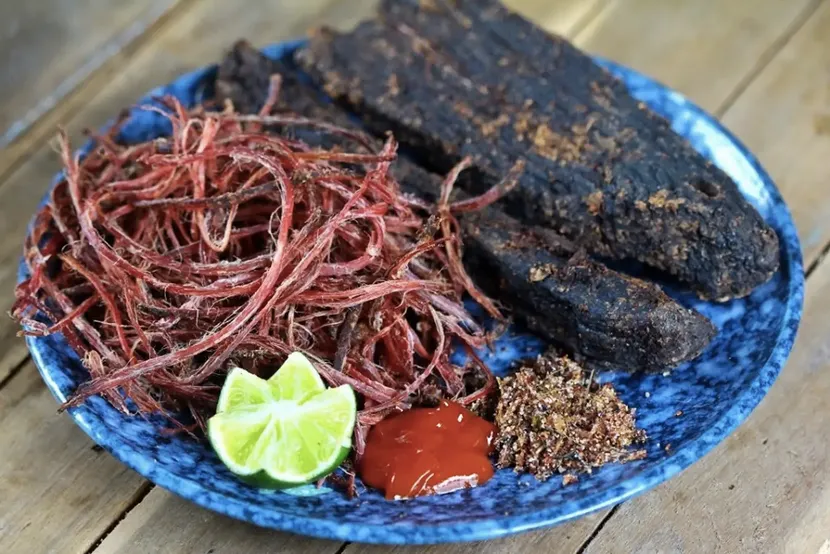
Developed initially as a reserve dish for ethnic minorities, smoked buffalo meat, or Thit trau gac bep, has gradually evolved into one of the best Sapa food specialties that visitors often buy to take home. The smoked buffalo meat has a strong smoky smell from its processing, unlike the dried beef in the lowlands.
How do Sapa people make this meat? First, the buffalo meat is diced into small pieces and marinated for about two hours in a mixture of spices, particularly Mac Khen leaves, salt, and chili. The locals will hang the meat up just right above the hot stove so the smoke from the kitchen slowly dries the buffalo meat, giving it a deep brown hue while preserving the red and tender inside. After around 8 months or a year, the meat skewers are removed, and the dish is now ready to eat. One unique feature is that even though the outside is covered in cooking smoke, the meat inside still has an attractive bright red color when torn off. The dish may initially taste a little salty and bitter, but after you get used to it, the combination of the sweet flavor of the buffalo meat and the spicy flavor of the Mac khen leaves will make it difficult to put down.
6. Men Men
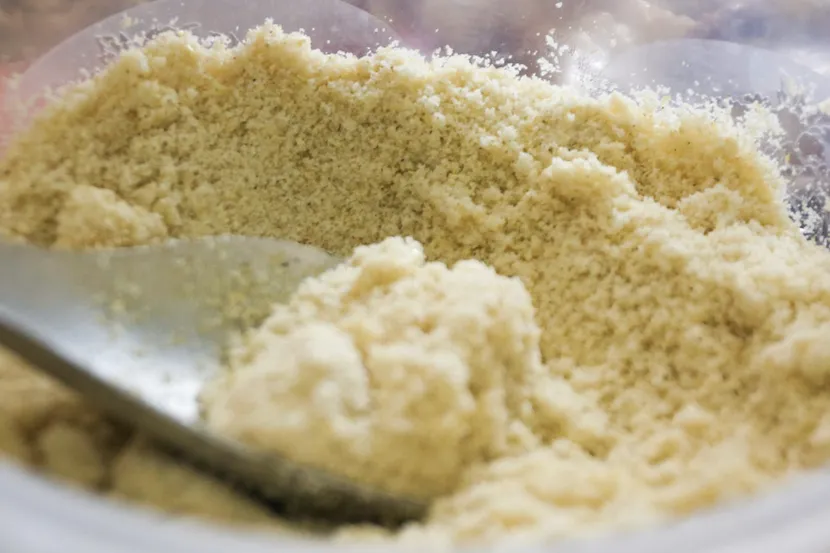
The H'mong people's Men Men is a fragrant and rustic dish made entirely from local maize, and it is one of the most famous Sapa traditional food specialties. This Sapa local food is simple yet requires a meticulous process to prepare, making it a unique traditional food to try in Sapa for those exploring authentic highland cuisine.
To make Men Men, harvested corn is cut from the cob and will then be ground and screened to remove large kernels and shells. This process used to take a lot of time because the majority of H'mong families used stone grinders to grind corn by hand. Cornmeal is beaten with a little water by H'mong women before being cooked in a pan. "Mèn mén", after being cooked, has a distinctive natural sweetness. It is often served with hearty soups such as bone broth or pumpkin soup, creating a warm and nourishing meal that perfectly suits Sapa’s cool climate. If you are wondering what to eat in Sapa beyond the usual tourist dishes, Men Men is an excellent choice to experience true ethnic flavors.
7. Black chicken
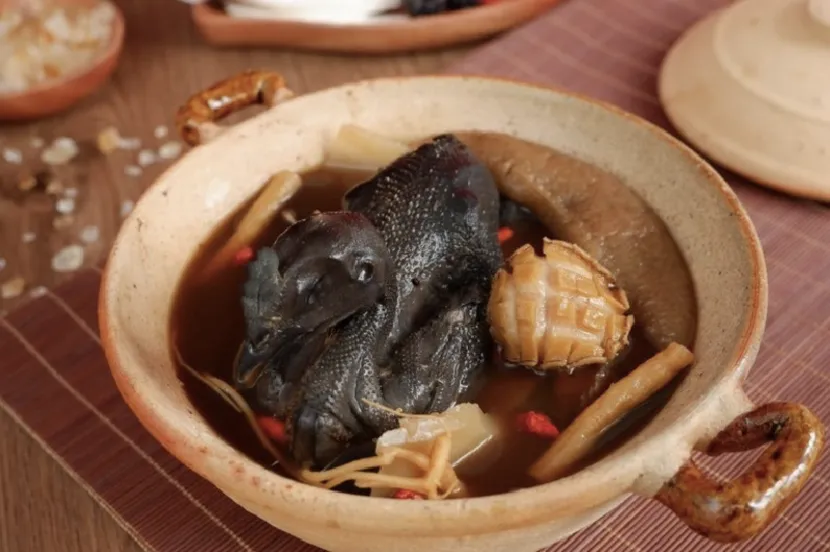
If you ever have the chance to visit Sapa, you must try the Black Chicken, widely regarded as one of the best Sapa food dishes. As the name implies, black chickens have black fur and skin. The chicken itself is quite small, weighing about 1.2 kilograms, but the locals let the chickens forage for natural food in the area, so their meat is fragrant and delectable.
Similar to Cap Nach pork, Sapa Black Chicken can be prepared in various ways, by frying, boiling, and steaming. But I strongly advise trying honey-marinated grilled black chicken. The chicken will be grilled directly over charcoal after soaking in honey. You will have an unforgettable experience thanks to the combination of the sweetness of the meat and the honey.
If you are compiling a list of traditional food to try in Sapa or wondering what to eat in Sapa for an unforgettable experience, grilled Black Chicken should be high on your list.
8. Con sui (dry Pho)
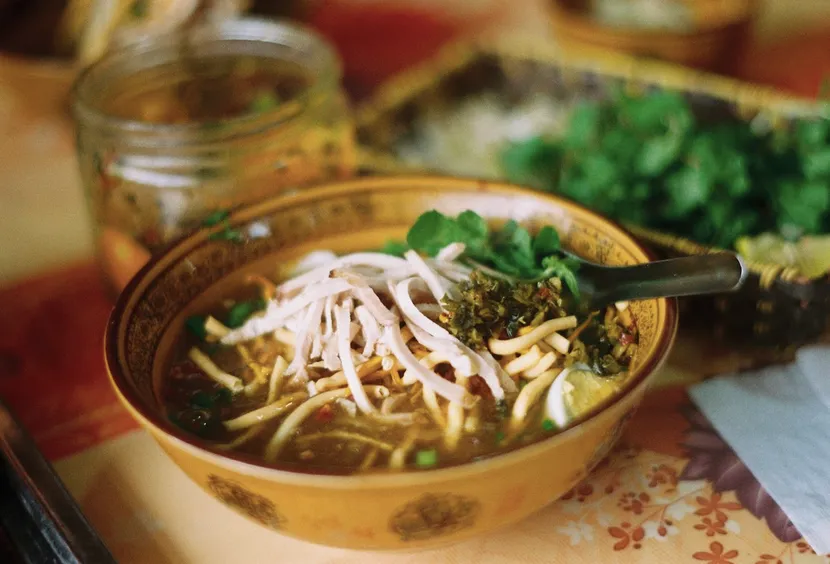
While Vietnamese pho (noodle soup) may be the country’s most famous dish, Sapa offers its own unique version known as Con Sui (also called Pho Khan). Created by the local Hoa community, this flavorful noodle dish is a hidden gem in the world of Sapa local food.
Different from widely-known pho, Con Sui does not contain much broth. It is just enough sauce to incorporate every topping together. When you order con sui at a local restaurant, you will find a bowl containing rice noodles, beef, pepper, chili, herbs, crispy roasted shallots, and roasted peanuts. The rice noodles in this dish are very similar to those in pho, but I think it is thicker and normally made by hand. Fresh locally-harvested vegetables are also served with con sui. Due to Sapa's chilly climate, adding some chili sauce will enhance the dish's flavor.
9. Sapa chestnut cake
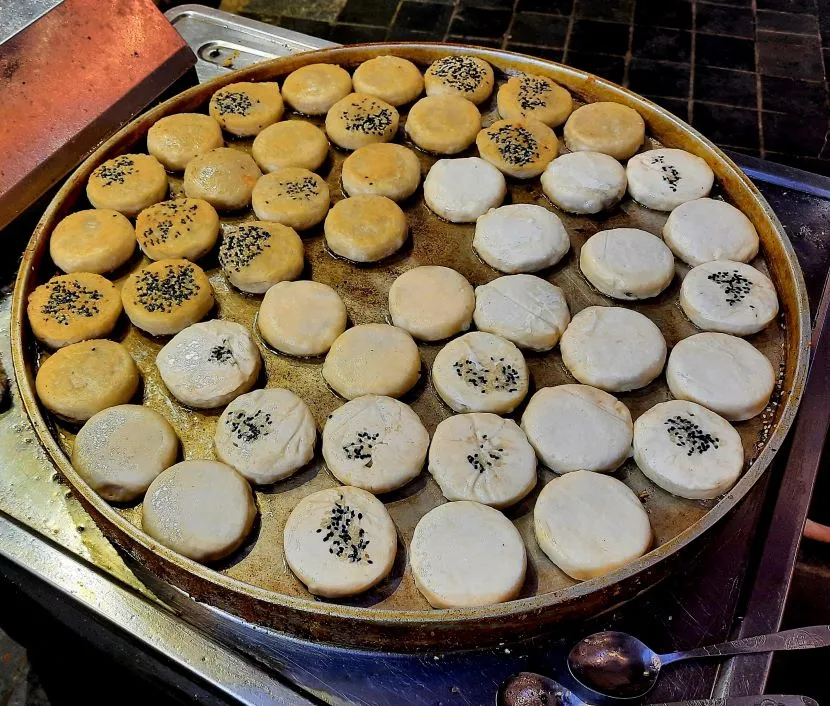
Sapa chestnut cake can be used within 5-7 days in normal condition
Sapa Chestnut Cake is a beloved local specialty that captivates visitors with its distinctive aroma and unique flavor. Known as one of the best Sapa food souvenirs, this treat is perfect for those seeking authentic Sapa local food to take home. The cake features a crispy golden-brown outer shell made from wheat flour and a soft, mildly sweet filling made from cooked and pureed chestnuts.
What makes Sapa Chestnut Cake special is the balance of textures - crunchy on the outside, soft and fragrant on the inside, with a pleasant nutty sweetness. The cake is made by hand, going through several steps like mixing the batter, shaping the cake, making the filling, etc. The cake is fried until golden brown and has a delectable sweet and nutty flavor. The cake can be stored for 2 to 3 days after processing. Asking the seller to vacuum it will make it last longer if you decide to take it home. You can store it for seven to twenty days in the refrigerator or freezer at home. Take it out to thaw before serving, and then preheat the oven or air fryer for 3-5 minutes.
10. Sapa fruit
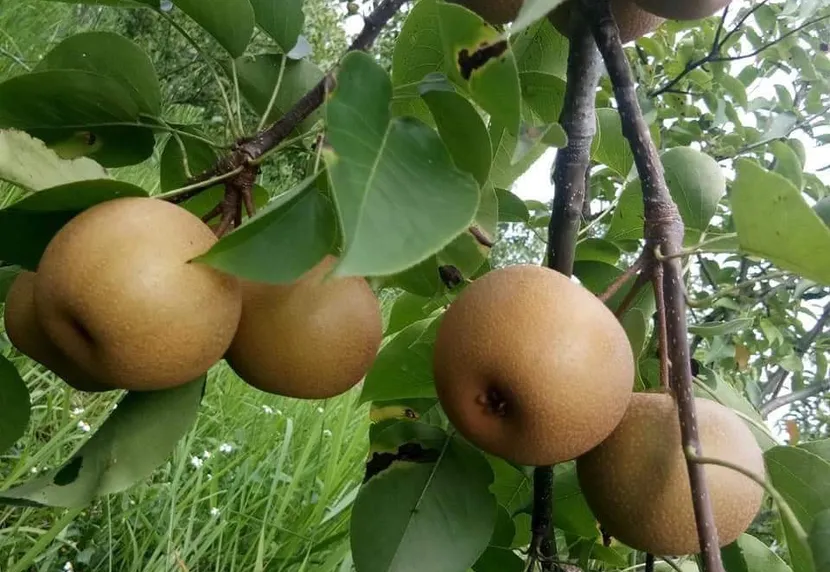
No Sapa food journey is complete without tasting the region’s fresh and unique Sapa fruit varieties. Among them, the most famous is Mac Cop, a specialty fruit with a naturally sweet flavor, a slight sourness, and a refreshing aroma similar to pears. Loved by both locals and visitors, Mac Cop is considered one of the healthiest Sapa local food items, supporting digestion and aiding nutrient absorption.
What are the best fruits to eat in Sapa, aside from that? The ethnic people of Ta Van Valley frequently use a priceless variety of plums with soft, sweet red flesh that has a cooling and detoxifying effect to treat endocrine disorders, hydrocephalus, and other conditions. People used to buy this plum in June and soak it for about 6 months in an opaque jar (away from light) to make Ta Van plum wine, which is regarded as a specialty of this town.
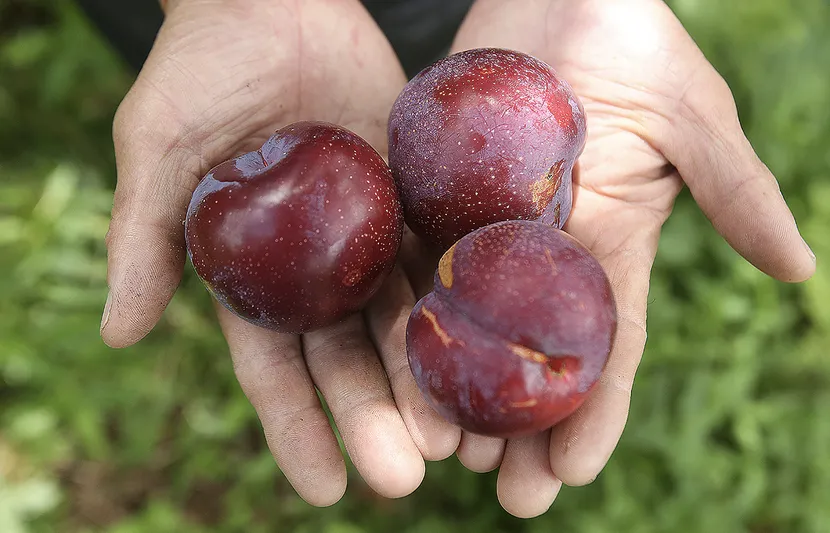
Along with plums and Mac cop, visitors to Sapa can also indulge in the silky, pink peaches during the summer. Peach is primarily grown on slopes in cold climates without the use of stimulants, allowing for immediate enjoyment by visitors. The Sapa peach is a tiny fruit. However, in terms of maturity. It smells fragrant, sweet, and crunchy, and it does not resemble any fruit at all.
Above is information about Sapa food and some must-try local dishes you should not miss when visiting Sapa. If you need any further assistance, please leave a comment below or contact us directly via email at [email protected] or WhatsApp at +84 382 536 266 for free consultation and the best quotes/promotions from IZITOUR.
To fully enjoy these delicious dishes and explore the beauty of the mountains, check out our Sapa tour and trekking packages for authentic local experiences.
Read more:
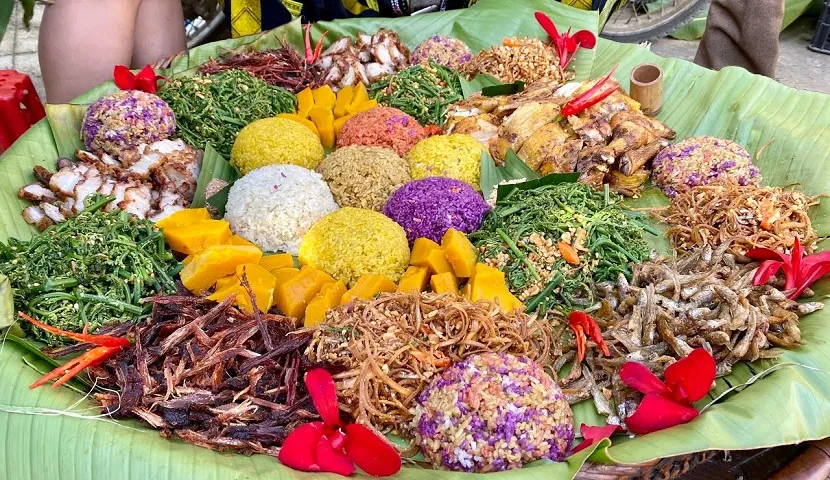








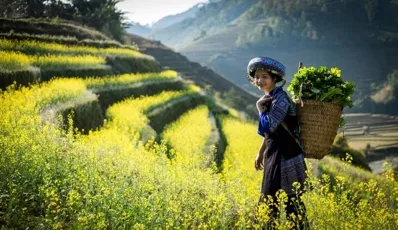
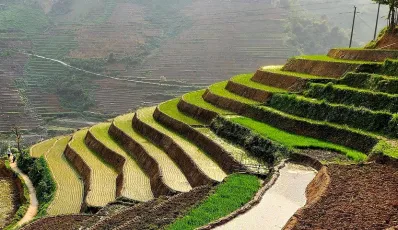


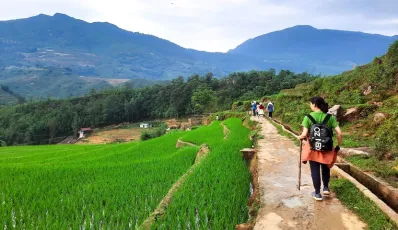
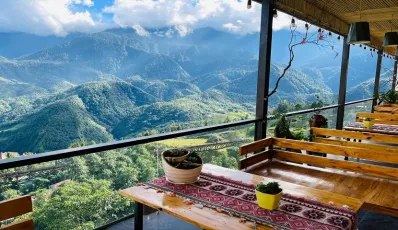
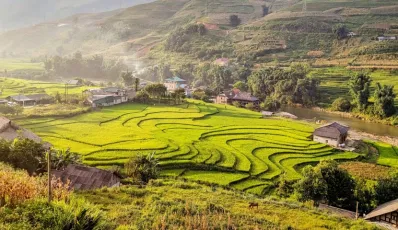
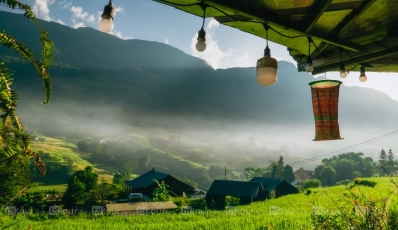




 TRAVELERS' CHOICE 2025
TRAVELERS' CHOICE 2025 